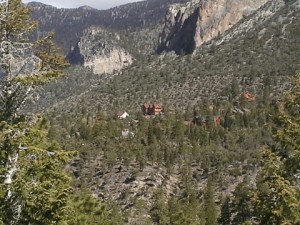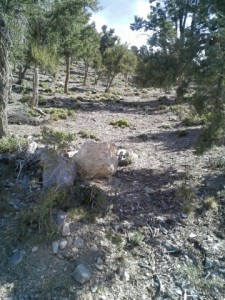Fuel Breaks Can Save the Day
July 24th, 2014
Last July’s Carpenter 1 Fire made national headlines and filled the skies of Las Vegas with smoke. A recent YouTube search turned up a video, posted by the U.S. Forest Service, about the role fuels reduction projects played in saving many homes in the Mt. Charleston area from wildfire.
You might be wondering “What is a fuels reduction project?” Don’t worry, so was I. In the video, a Nevada Division of Forestry representative explains that a fuels reduction project is meant to thin vegetation, to reduce space between trees, shrubs and understory plants to reduce speed, flame lengths, and fire intensity when a fire burns up to the area. The video also shows a map of a strip of fuels reduction, also known as a fuel break, and explains that it, along with the firefighters, are responsible for saving the homes in Trout Canyon. Watch it here.
As fuel breaks seem to be effective in saving a community from an oncoming wildfire, how do I know if my community needs one? Time for some sleuthing.
As a Nevada Division of Forestry Fire Protection Officer, Paul Carmichael performs home assessments and provides fuel reduction recommendations for homeowners. He uses Living With Fire material and his experience with fire and fuels to make recommendations to reduce a home or community’s wildfire threat.

To get started Paul suggested talking to neighbors to get buy in for the project and giving your local fire department a call to see where to go next. An important step to include in the process is a maintenance plan. Vegetation grows back, and all that hard-won space can become very flammable again over time.
I’d imagine that establishing a fuel break would not only be labor intensive, but expensive as well. Paul had a suggestion for me there too. Local fire departments, county representatives, or sometimes even established homeowners associations can apply for grant funding to get the work done. One he suggested in particular was the Nevada Division of Forestry’s State Fire Assistance Grant. Read up on the program here.
I think many of my neighbors would agree that a fuel break around our community would bring us all a little more peace of mind. The process seems like a bit of an endeavor, but I like the idea of working together with my neighbors and local fire department to get started. Ultimately our community will be closer, and much safer, for it.
Let’s get to work!
Natalie Newcomer
